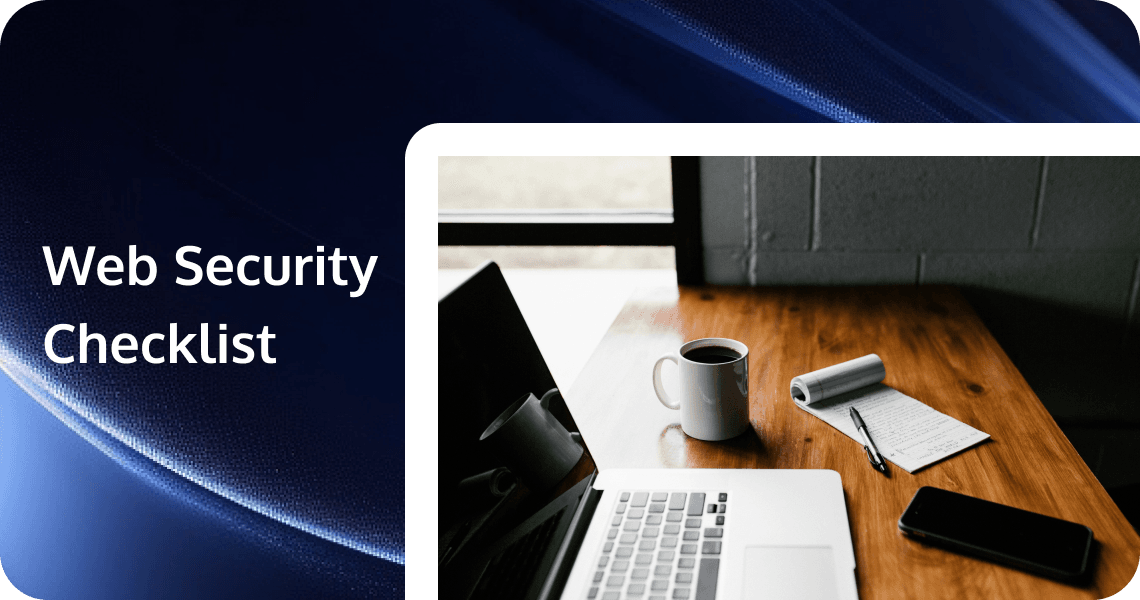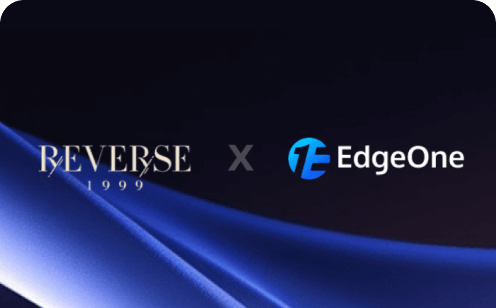Comprehensive Web Security Checklist: Essential Safeguards for Your Modern Applications

In today's interconnected digital landscape, web security has become a critical cornerstone of any successful application deployment. Recent data from IBM's Cost of a Data Breach Report indicates that the average cost of a data breach reached $4.45 million in 2023, a 15% increase over three years. More alarmingly, web application vulnerabilities remain among the top attack vectors exploited by malicious actors.
This comprehensive web security checklist serves as a practical guide for developers, security professionals, and IT administrators tasked with safeguarding web applications. Rather than a mere theoretical framework, this checklist provides actionable verification points to systematically evaluate and enhance your application's security posture.
To use this checklist effectively, consider implementing it during various phases of your development lifecycle:
- During design and architecture planning
- Throughout the development process
- Prior to deployment
- As part of regular security assessments
- Following significant application changes
1. Authentication and Identity Management
Strong Password Policies and Implementation
- Enforce minimum password length (at least 12 characters recommended)
- Require complexity (uppercase, lowercase, numbers, special characters)
- Implement password strength meters on registration forms
- Check passwords against common password dictionaries
- Store passwords using strong, adaptive hashing algorithms (bcrypt, Argon2, PBKDF2)
Multi-factor Authentication (MFA)
- Offer MFA options for all user accounts
- Implement app-based authenticators or hardware security keys
- Apply risk-based authentication for sensitive operations
- Ensure MFA reset processes are secure
Secure Session Management
- Generate strong, random session identifiers
- Set appropriate session timeouts
- Implement secure cookie attributes (Secure, HttpOnly, SameSite)
- Regenerate session IDs after authentication
- Provide secure session termination
Account Recovery Procedures
- Avoid security questions as a primary recovery method
- Implement time-limited recovery tokens
- Send notifications when recovery is initiated
- Log and monitor account recovery attempts
Single Sign-On Considerations
- Use established protocols (OAuth 2.0, OpenID Connect)
- Validate tokens on the server side
- Implement proper scoping of permissions
- Regular audit of third-party authentication providers
2. Authorization and Access Control
Principle of Least Privilege
- Grant minimum permissions necessary for user roles
- Implement time-bound access for elevated privileges
- Regularly review and prune access rights
- Default deny all access unless explicitly granted
Role-Based Access Control (RBAC)
- Define clear role hierarchies
- Separate duties across roles
- Implement contextual access controls
- Enforce server-side authorization checks
JWT and Token Security
- Set appropriate token expiration times
- Use secure algorithms for token signing
- Implement token validation on all protected resources
- Include only necessary claims in tokens
- Maintain a token revocation mechanism
API Authorization
- Implement OAuth 2.0 for API access
- Use API keys with proper entropy
- Rate limit API requests
- Log and monitor API usage patterns
3. Input Validation and Output Encoding
Client-Side and Server-Side Validation Strategies
- Implement validation on both client and server
- Validate data type, format, length, and range
- Reject unexpected or malformed input
- Use whitelisting rather than blacklisting approaches
Input Sanitization Techniques
- Apply context-specific sanitization
- Use parameterized queries for database operations
- Sanitize file names and paths
- Validate and sanitize JSON and XML inputs
Output Encoding for Different Contexts
- HTML encode data displayed in web pages
- JavaScript encode data used in scripts
- CSS encode data used in stylesheets
- URL encode parameters in links
Content Security Policy Implementation
- Define restrictive CSP headers
- Use nonces or hashes for inline scripts
- Implement report-uri directive for violation monitoring
- Regularly review and tighten CSP rules
4. Protection Against OWASP Top 10
SQL Injection Prevention
- Use parameterized queries or prepared statements
- Implement ORM frameworks with proper configuration
- Apply least privilege database accounts
- Validate and sanitize all database inputs
Cross-Site Scripting (XSS) Mitigation
- Implement context-appropriate output encoding
- Use modern frameworks with built-in XSS protections
- Apply Content-Security-Policy headers
- Sanitize HTML input for rich text fields
Cross-Site Request Forgery (CSRF) Protection
- Implement anti-CSRF tokens
- Validate origin and referrer headers
- Use SameSite cookie attribute
- Require re-authentication for sensitive actions
Server-Side Request Forgery (SSRF) Prevention
- Validate and sanitize all URLs
- Implement allowlists for external services
- Use dedicated service accounts with limited privileges
- Restrict outbound requests to internal networks
XML External Entity (XXE) Attack Mitigation
- Disable XML external entity processing
- Use less complex data formats when possible (JSON)
- Patch XML parsers to latest versions
- Implement whitelisting of XML entities
5. Secure Communications
HTTPS Implementation
- Enforce HTTPS across all pages and resources
- Redirect HTTP to HTTPS automatically
- Use HSTS headers with appropriate max-age
- Include subdomains in HSTS policy when possible
TLS Configuration Best Practices
- Support only TLS 1.2+ protocols
- Configure strong cipher suites
- Implement perfect forward secrecy
- Regularly test TLS configuration with tools like SSL Labs
Certificate Management
- Use appropriate certificate types
- Implement certificate rotation procedures
- Monitor certificate expiration
- Secure private keys with proper access controls
HTTP Security Headers
- X-Content-Type-Options: nosniff
- X-Frame-Options: DENY or SAMEORIGIN
- Strict-Transport-Security with appropriate parameters
- Referrer-Policy to control information leakage
- Permissions-Policy to limit browser features
6. Data Protection
Encryption at Rest and in Transit
- Implement TLS for all data in transit
- Encrypt sensitive database fields
- Encrypt stored files containing sensitive information
- Use volume or full-disk encryption for backups
Sensitive Data Handling
- Classify data according to sensitivity
- Implement data minimization principles
- Apply access controls based on data classification
- Mask or truncate sensitive data in logs and displays
Database Security
- Secure database configuration and hardening
- Implement database access controls
- Regularly patch database software
- Encrypt connection strings and credentials
File Upload Security
- Validate file types, sizes, and contents
- Scan uploads for malware
- Store uploaded files outside web root
- Generate random file names to prevent enumeration
Protection Against Data Leakage
- Monitor and control outbound data
- Implement data loss prevention measures
- Review error messages for sensitive information
- Conduct regular data exposure assessments
7. Error Handling and Logging
Secure Error Management
- Display generic error messages to users
- Log detailed errors server-side only
- Implement custom error pages
- Prevent stack traces from being exposed
Effective Security Logging
- Log authentication events (successes and failures)
- Record access control decisions
- Log input validation failures
- Include contextual information (user, timestamp, action)
Log Monitoring and Alerting
- Centralize log collection
- Implement real-time alerts for critical events
- Establish baseline behavior patterns
- Configure anomaly detection
Audit Trails for Sensitive Operations
- Log changes to user permissions
- Record access to sensitive data
- Maintain unalterable audit trails
- Ensure logs meet compliance requirements
8. Infrastructure Security
Server Hardening Techniques
- Remove unnecessary services and software
- Apply security patches promptly
- Configure host-based firewalls
- Implement file integrity monitoring
Container Security
- Use minimal base images
- Scan container images for vulnerabilities
- Implement container runtime security
- Apply the principle of least privilege to container processes
Cloud Security Configurations
- Configure cloud provider security features
- Use private networks and VPCs
- Implement proper IAM policies and roles
- Enable cloud provider security monitoring
Web Application Firewall (WAF) Setup
- Deploy WAF protection
- Configure custom rules for application-specific threats
- Monitor WAF alerts and logs
- Regularly update WAF rules
9. Security Testing and Validation
Automated Scanning Tools
- Integrate SAST tools in the CI/CD pipeline
- Run regular DAST scans against staging and production
- Implement dependency scanning
- Conduct periodic automated security testing
Penetration Testing Methodology
- Perform regular penetration tests
- Include both authenticated and unauthenticated testing
- Test business logic vulnerabilities
- Follow up on all findings with remediation plans
Security Code Reviews
- Establish secure coding standards
- Conduct peer reviews for security-critical code
- Use automated code review tools
- Train developers on secure coding practices
Continuous Security Validation
- Implement security regression testing
- Validate security fixes
- Conduct regular security assessments
- Test incident response procedures
10. Third-Party Components
Dependency Management
- Maintain an inventory of all dependencies
- Establish version pinning policies
- Regularly update dependencies
- Review security implications of new dependencies
Vulnerability Scanning for Libraries
- Integrate dependency scanning in CI/CD
- Subscribe to security advisories
- Establish procedures for critical vulnerabilities
- Document accepted risks for necessary but vulnerable components
Supply Chain Security
- Verify the integrity of third-party packages
- Use package lockfiles
- Consider vendor security practices in procurement
- Implement subresource integrity for CDN resources
API Security Considerations
- Document all external API dependencies
- Monitor third-party API usage
- Implement circuit breakers for API failures
- Have fallback plans for critical API dependencies
11. Incident Response and Recovery
Security Incident Response Plan
- Document incident response procedures
- Define roles and responsibilities
- Establish communication channels
- Conduct tabletop exercises
Breach Notification Procedures
- Understand legal notification requirements
- Prepare notification templates
- Establish timelines for notification
- Define escalation paths
Backup and Recovery Strategies
- Implement regular backup procedures
- Test restoration processes
- Store backups securely
- Maintain offline backup copies
Post-Incident Analysis
- Conduct root cause analysis
- Document lessons learned
- Update security controls based on findings
- Share (sanitized) knowledge across teams
12. Compliance and Regulations
Industry-Specific Requirements
- Identify applicable regulations
- Map security controls to compliance requirements
- Conduct regular compliance assessments
- Stay informed about regulatory changes
GDPR, HIPAA, PCI DSS Considerations
- Implement data subject rights mechanisms
- Conduct data protection impact assessments
- Document data processing activities
- Implement appropriate technical safeguards
Documentation and Evidence Collection
- Maintain security control documentation
- Record compliance activities
- Archive evidence of security testing
- Document risk acceptance decisions
Conclusion
A comprehensive web security checklist is essential for protecting your website and online services from a wide range of threats. By addressing key areas such as network security, application security, data protection, user authentication, and incident response, you can significantly reduce the risk of security breaches and ensure the safety of your digital assets. Stay vigilant and proactive in maintaining web security, regularly update your security measures, and educate yourself and your team about the latest threats and best practices. With a strong security foundation, you can confidently navigate the digital landscape and safeguard your online presence.
EdgeOne offers comprehensive security advantages by integrating advanced security features with edge computing capabilities. It provides robust Web Protection and DDoS Protection, effectively mitigating large-scale traffic attacks to ensure service availability. The built-in Web Application Firewall (WAF) defends against common web threats like SQL injection, XSS, and CSRF, safeguarding web applications from malicious requests. Additionally, EdgeOne's intelligent traffic scheduling and edge caching mechanisms optimize content delivery while reducing latency, ensuring a seamless user experience. By combining security and acceleration in a single platform, EdgeOne simplifies management and enhances overall network resilience.
Sign up to begin your journey with us!

